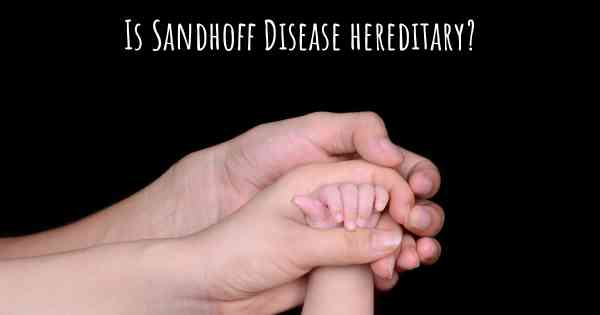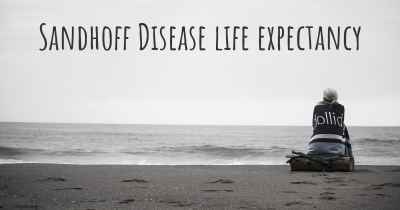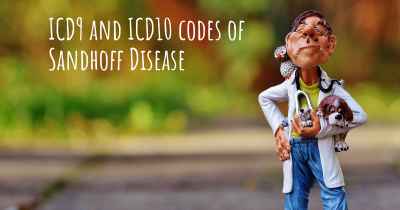Is Sandhoff Disease hereditary?
Here you can see if Sandhoff Disease can be hereditary. Do you have any genetic components? Does any member of your family have Sandhoff Disease or may be more predisposed to developing the condition?

Sandhoff Disease is a hereditary condition caused by a genetic mutation. It is inherited in an autosomal recessive manner, meaning that both parents must carry the mutated gene for their child to be affected. The disease results in the accumulation of harmful substances in the brain and nervous system, leading to progressive neurological deterioration. Genetic counseling and testing are crucial for families with a history of Sandhoff Disease to understand the risk of passing it on to their children.
Sandhoff Disease: Is it Hereditary?
Sandhoff disease, also known as GM2 gangliosidosis type 2, is a rare and severe genetic disorder that affects the central nervous system. It is a part of a group of disorders called lysosomal storage diseases, which are caused by the malfunctioning of enzymes responsible for breaking down certain substances in the body. Specifically, Sandhoff disease is characterized by the deficiency of an enzyme called hexosaminidase, which leads to the accumulation of harmful substances in the brain and spinal cord.
Genetic Basis of Sandhoff Disease
Sandhoff disease is inherited in an autosomal recessive manner, meaning that both parents must carry a copy of the mutated gene for their child to be affected. The disease is caused by mutations in the HEXB gene, which provides instructions for producing the beta subunit of the hexosaminidase enzyme. When both parents are carriers, there is a 25% chance with each pregnancy that their child will inherit two copies of the mutated gene and develop Sandhoff disease.
Carrier Status and Family Planning
It is important to note that carriers of Sandhoff disease do not typically show any symptoms of the disorder. They only carry one copy of the mutated gene, which is not sufficient to cause the disease. However, if both parents are carriers, they have a 25% chance of having an affected child with each pregnancy.
Genetic testing can be performed to determine carrier status for Sandhoff disease. This can be particularly useful for individuals with a family history of the disorder or those who are planning to have children. If both parents are identified as carriers, they may consider genetic counseling to understand the risks and explore available options for family planning.
Symptoms and Prognosis
Sandhoff disease typically manifests in infancy or early childhood and progressively worsens over time. The symptoms can vary in severity but often include:
- Progressive muscle weakness
- Loss of motor skills
- Seizures
- Intellectual disability
- Cherry-red spot in the eye
- Progressive deterioration of mental and physical abilities
The prognosis for individuals with Sandhoff disease is unfortunately poor, as the disorder is currently incurable. The progressive neurodegeneration leads to a significantly shortened lifespan, with most affected individuals not surviving beyond early childhood.
Management and Treatment
Currently, there is no cure for Sandhoff disease. Treatment primarily focuses on managing the symptoms and providing supportive care to improve the individual's quality of life. This may involve a multidisciplinary approach, including physical therapy, occupational therapy, and speech therapy to address the various challenges associated with the disease.
Research efforts are ongoing to develop potential therapies for Sandhoff disease, including gene therapy and enzyme replacement therapy. These approaches aim to address the underlying genetic cause or supplement the deficient enzyme, respectively. However, these treatments are still in the experimental stages and not yet widely available.
Conclusion
Sandhoff disease is a hereditary disorder caused by mutations in the HEXB gene. It is inherited in an autosomal recessive manner, meaning that both parents must carry a copy of the mutated gene for their child to be affected. Genetic testing can help identify carrier status and assist in family planning decisions. Unfortunately, there is currently no cure for Sandhoff disease, and treatment focuses on managing symptoms and providing supportive care. Ongoing research offers hope for potential future therapies.








